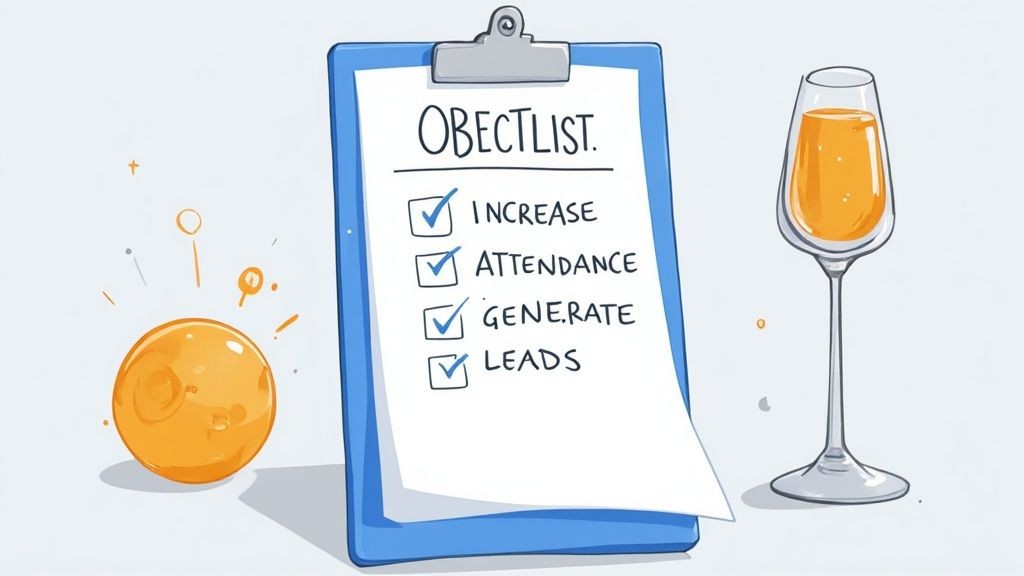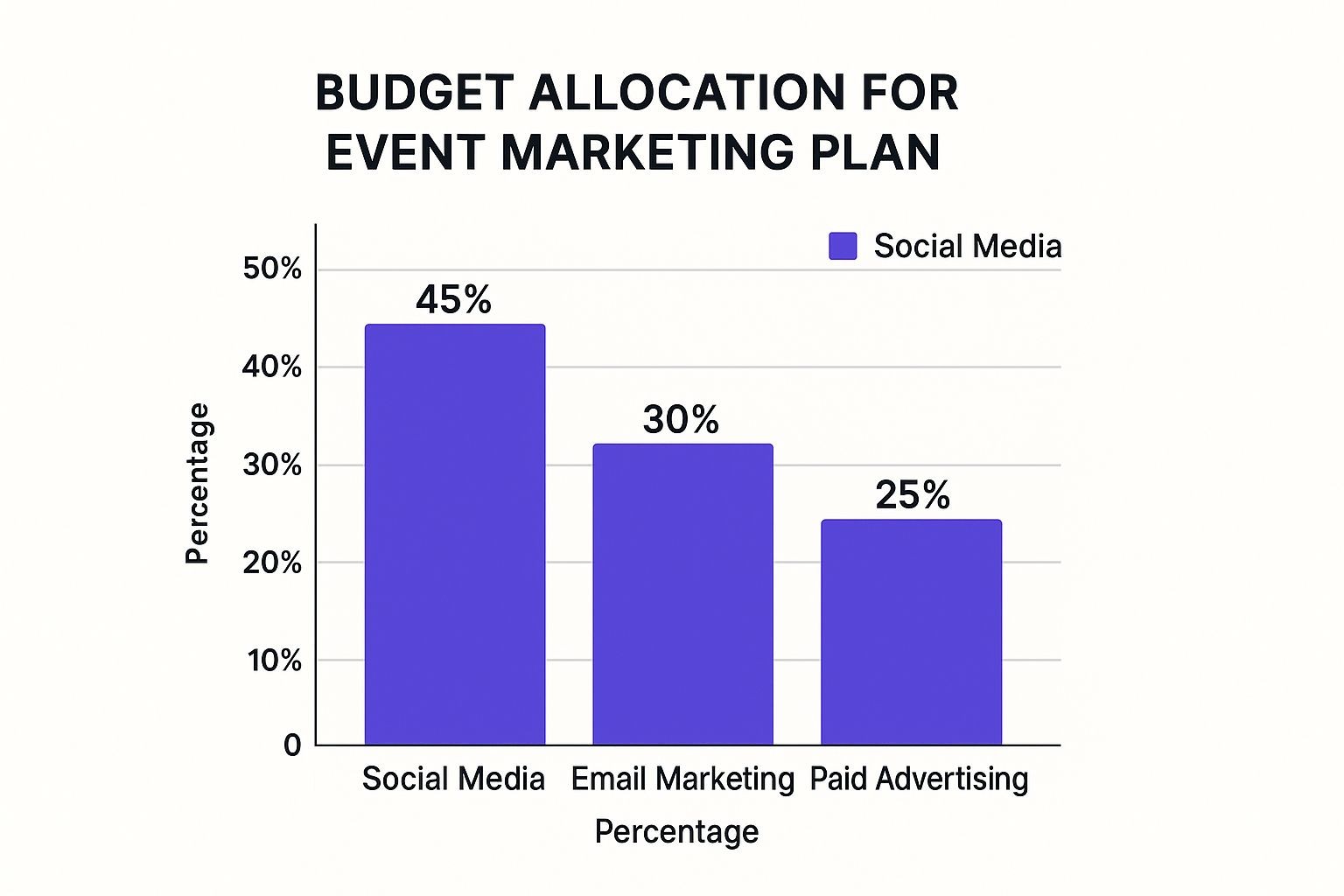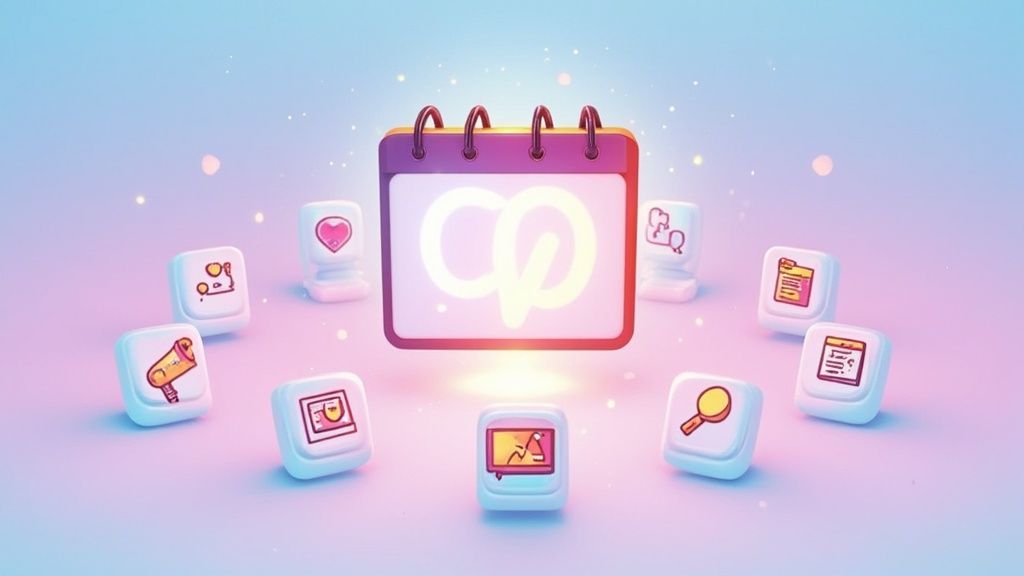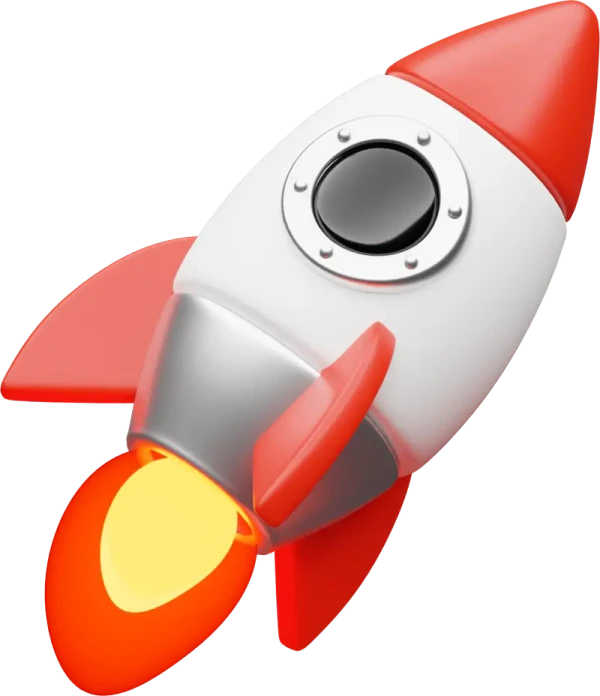Why Most Event Marketing Plans Fall Short (And How Yours Won't)
Let's be honest: a lot of corporate events feel like expensive, forgettable time wasters. You spend a huge chunk of your budget, pour in countless hours, and a week later, it's like it never happened. The real problem is that many companies treat events as isolated activities - a one-off conference or a standalone webinar - instead of as a core part of a bigger marketing campaign. A truly powerful event marketing plan doesn't just list tasks; it weaves the event into the fabric of your business goals.
The disconnect often begins with a misunderstanding of what attendees actually value. Flashy venues and big-name entertainment are exciting, but they don't automatically lead to business results. The best marketers have shifted their focus from creating flashy experiences to delivering genuine, tangible value. This means your event should solve a real problem, answer a tough question, or give your audience an exclusive opportunity they can't find anywhere else. It’s the difference between throwing a party and hosting a must-attend experience that creates a measurable impact.
From Isolated Tactic to Integrated Campaign
The most common mistake is seeing an event as the end of a marketing effort when it should be the centerpiece. Think of it less like a single firework and more like a bonfire that radiates warmth long before and after the main flame is lit. When your event marketing plan is treated as a complete campaign, every touchpoint - from the first "save the date" email to the post-event survey - works together.
For example, I once worked with a SaaS company that was tired of getting a low return from trade shows. Instead of another booth, they hosted a small, 200-person conference focused entirely on solving one major pain point for their ideal customer. The pre-event content warmed up attendees with valuable insights, the event delivered hands-on workshops, and the follow-up emails were personalized based on which sessions people attended. The result? They turned a modest event budget into $2 million in new sales pipeline because the event was a strategic campaign, not just a day on the calendar.
This strategic mindset is more important than ever as the industry expands. The global events industry was valued at roughly $736.8 billion in 2021 and is projected to climb to an incredible $2.5 trillion by 2035. With so much money being invested, simply "hosting an event" isn't enough to stand out anymore. You can dive deeper into these trends in this detailed event marketing report from Bizzabo.
The Real Reasons People Attend (And Why It Matters)
Another major oversight is not digging deep enough into why people show up. What really motivates someone to give up a full day, travel, and maybe even buy a ticket? It's rarely the free coffee. A solid event marketing plan is built on a foundation of deep audience research.
The chart below from Bizzabo shows the main reasons people attend events, both virtual and in-person.

As the data makes clear, networking and education are the top drivers. This insight is pure gold. It confirms that attendees want connection and knowledge, not just a sales pitch. Your plan will succeed where others fail if you prioritize these elements. Instead of leading with your product, lead with the expert speakers sharing groundbreaking insights or the structured networking sessions that promise real conversations. This value-first approach is what turns attendees from passive listeners into active participants and, eventually, loyal customers.
Finding Your Event's True Purpose Beyond 'Brand Awareness'
A solid event marketing plan kicks off by answering a surprisingly tough question: Why are we really doing this? If "to increase brand awareness" is the first thing that comes to mind, it's a sign to dig a little deeper. While brand awareness is a great outcome, it's usually a side effect of a more specific, measurable goal. Your CFO won't be moved by a report on "increased visibility," but they'll definitely listen to a 20% increase in qualified leads or a 15% faster sales cycle for attendees.
Getting past vague ambitions means defining what success looks like in real business terms. Every part of your event, from session topics to the networking setup, should connect back to a core objective. Think of your event as a tool designed for a specific job. You wouldn't use a hammer to saw a board, right? In the same way, you shouldn't host a massive conference if your actual goal is to nurture a few high-value enterprise accounts - an intimate roundtable would be a much better fit.
Define Success in Terms That Matter
To find your event's true purpose, you need to sync up your goals with what different stakeholders want to see. This simple framework can help you zero in on your main objective:
- Lead Generation: The mission here is to fill the top of your sales funnel with fresh, interested prospects. Success is tracked by the number of marketing qualified leads (MQLs) or sales qualified leads (SQLs) you generate. A large-scale webinar or a booth at a trade show are classic moves for this.
- Customer Nurturing & Retention: This is all about strengthening relationships with current customers to boost loyalty and stop them from leaving. Key metrics could be upsell revenue, renewal rates, or customer satisfaction scores. Exclusive user conferences or client appreciation dinners work perfectly for this.
- Thought Leadership: Your aim is to position your company as the top expert in your field. This is trickier to measure directly, but you can track it through press mentions, speaking invitations after the event, and social media sentiment. A niche, content-rich summit is an excellent way to achieve this.
While brand awareness is often a primary goal, your event's true purpose might lie deeper. However, for those instances where brand awareness is a key objective, exploring top strategies to improve brand awareness can offer valuable insights.
Uncover Your Audience's Real Motivations
Once you know your internal "why," you have to figure out your audience's "why." Why should they give you their precious time and attention? The trick is to look past job titles and company logos to uncover the real-world problems and motivations that drive them to attend events.
This graphic from an Eventbrite planning guide shows the core pillars of event strategy, starting with defining your goals and audience.

The image highlights that your event's success is built on a clear understanding of its purpose and the people it's for. For example, if you find out your audience is wrestling with a new industry regulation, a workshop offering practical compliance tips will be much more appealing than another generic networking happy hour. This deep understanding also helps shape your messaging. For more ideas, you can look at these powerful event description examples that show how to communicate value clearly.
By matching your business goals with what your audience truly needs, you create an event that doesn't just draw a crowd - it creates genuine fans.
Choosing Your Event Format Without Following Trends
The constant tug-of-war between virtual and in-person events often distracts from the real questions. Instead of getting caught up in which format is “better,” a solid event marketing plan starts by asking: What experience truly serves our audience? Which format directly supports our business goals? And frankly, what can our team pull off without a hitch? The best answer isn't about jumping on the latest bandwagon; it's about making a smart, strategic choice.
I've seen B2B companies get a much higher return from a small, focused virtual workshop than from a pricey conference booth. It creates a direct line to experts and encourages real discussion - something nearly impossible to achieve in a loud exhibition hall. On the flip side, some brands are wisely investing in unique in-person experiences, like factory tours or hands-on product demos, that simply can’t be replicated online. These events forge a tangible connection that digital-only competitors can't match.
Aligning Format with Goals and Audience
Your event format should be a direct result of your main objective. If your goal is to rake in a large number of top-of-funnel leads across different regions, a virtual summit or webinar is a no-brainer. They offer incredible scale and have low barriers to entry for attendees. However, if you’re trying to close high-value deals or build stronger bonds with key clients, the personal connections from an in-person dinner or an exclusive roundtable are usually far more powerful.
The infographic below shows a common promotional budget split, which naturally shifts based on your chosen event format.

This breakdown shows that digital channels get the biggest piece of the pie, a reality that applies when promoting any event today - whether it's virtual, hybrid, or entirely in-person.
Before you decide on a format, it’s useful to weigh the pros and cons. This table breaks down the typical investment versus the potential impact for each type.
Event Format Comparison: Investment vs. Impact AnalysisComprehensive comparison of in-person, virtual, and hybrid event formats including costs, engagement metrics, and ROI potential
| Format Type | Average Cost | Engagement Rate | Lead Generation | ROI Timeline | Best For |
|---|---|---|---|---|---|
| In-Person | High ($$$$) | High (Direct) | High-Quality | Long (6-12 mos) | Building deep relationships, closing major deals, hands-on demos. |
| Virtual | Low ($) | Moderate (Measured) | High-Volume | Short (1-3 mos) | Mass lead generation, brand awareness, global reach. |
| Hybrid | Very High ($$$$$) | Varies (Complex) | High-Volume & Quality | Medium (3-9 mos) | Maximizing reach while keeping a core in-person experience. |
This comparison makes it clear there's no single "best" option. A low-cost virtual event can deliver a fast ROI for lead generation, while a high-investment in-person gathering is unmatched for building lasting partnerships. A hybrid event aims for the best of both, but its complexity and cost demand significant resources to execute well.
The Rise of Hybrid and Virtual Strategies
Don't make the mistake of thinking digital events were just a temporary solution. Virtual and hybrid formats are now essential parts of a modern marketing toolkit. The virtual events market is expected to surge from $193.45 billion in 2024 to $537.18 billion by 2029. This isn't just about convenience; it's about expanding your reach and gathering valuable data. You can dig into more details in Cvent's latest event statistics. Virtual platforms provide amazing analytics on attendee engagement - information that’s much more difficult to track at a live venue.
A hybrid model can give you the best of both worlds, but it needs careful planning to prevent it from feeling like two separate, disjointed events. A great hybrid event makes virtual attendees feel just as valued as those in the room. This might mean having a dedicated virtual host, interactive Q&A that includes questions from both audiences, and exclusive digital content. The goal is to design an experience that feels personal and valuable, no matter how someone attends.
Before you commit to a complex hybrid event, take an honest look at your team's technical skills and resources. By staying focused on your goals and your audience’s needs, you can pick a format that delivers real results, not just one that follows the crowd.
Creating Realistic Timelines That Actually Work
A perfect-looking timeline in your event marketing plan can feel like a work of art. It’s all neat rows and confident deadlines on a spreadsheet, right up until the first unexpected delay. The secret to a timeline that bends instead of breaks is to build it with a healthy respect for a little chaos. This isn't about starting ridiculously early; it's about starting smart and understanding which dominoes will topple everything else if they fall.
This means you need to identify your critical path - the sequence of tasks that directly impact the event date and absolutely cannot be delayed. For most events, this means tasks like securing your keynote speaker or booking the venue are on the critical path. If you delay these, your entire promotional calendar gets thrown off. In contrast, finalizing the design of the post-event thank you email is not. Knowing the difference is what separates seasoned pros from panicked planners.
Building a Flexible Framework
A resilient timeline has contingency built in, but not by just adding a random week to every deadline. That’s a lazy approach that only creates a false sense of security. Instead, build specific buffers before major milestones. For example, if your event website needs to launch by June 1st, set an internal team deadline for May 20th. This gives you a one-week buffer to handle unexpected bugs or last-minute stakeholder feedback without derailing your promotional launch.
Vendor management is another area where timelines often get derailed. The key is to treat vendors like partners, not just suppliers. Set clear expectations from day one with a shared project plan. Regular, brief check-ins, like a 15-minute call every Monday, are far more effective than long, infrequent email chains. This keeps your event top-of-mind for them and allows you to spot potential delays before they become full-blown crises.
Budgeting for Reality, Not Just the Obvious
Your budget is a direct reflection of your timeline and needs to account for more than just the big-ticket items. You have to plan for the hidden costs that always pop up. Things like last-minute graphic design changes, rush shipping fees for swag, or needing emergency technical support during a webinar can blindside even the most experienced planners. A good rule of thumb is to allocate 5-10% of your total budget to a contingency fund.
To get a clearer picture of where your money is going, a detailed budget template that categorizes every potential expense is your best friend. Breaking down costs helps you see the true financial picture and identify where you can build in a buffer.
This example from Eventbrite shows how breaking down costs into smaller categories helps you see where money is really going. By anticipating these smaller, often-overlooked expenses, your budget becomes a much more reliable tool.
To help you plan, here's a practical guide to allocating your event budget. It shows how spending can differ between in-person, virtual, and hybrid events.
Event Marketing Budget Allocation Guide
Recommended budget distribution across key event marketing categories with industry benchmarks
| Budget Category | Percentage of Total | In-Person Events | Virtual Events | Hybrid Events | Key Considerations |
|---|---|---|---|---|---|
| Venue & Catering | 30-40% | High | N/A | High | For in-person events, this is typically your largest fixed cost. |
| Marketing & Promotion | 15-25% | Medium | High | High | Virtual events often require a larger digital ad spend to drive traffic. |
| Speakers & Talent | 10-20% | Medium | Medium | Medium | Fees can vary widely. It's smart to lock these in early. |
| Technology & A/V | 10-15% | High | High | Very High | This includes platform fees, streaming services, and on-site A/V equipment. |
| Staff & Operations | 5-10% | Medium | Low | Medium | Don't forget to budget for temporary staff, volunteers, or event managers. |
| Contingency Fund | 5-10% | Essential | Essential | Essential | This is your safety net for all unexpected issues and last-minute needs. |
This table provides a solid starting point, but remember to adjust the percentages based on your specific event's goals and format.
Finally, communication is the glue that holds your timeline and budget together. Give your stakeholders regular, honest updates. When a challenge arises, don't just present the problem - bring a proposed solution with it. This builds confidence, not panic, and shows that you’re in control, even when things don’t go perfectly to plan. This proactive communication, combined with a well-structured timeline and a realistic budget, creates a truly functional and effective event marketing plan. And when it's time to gather attendee details, explore these event registration form templates to make the process smoother.
Building Anticipation That Converts Into Attendance
A solid event marketing plan does more than just schedule a few social media posts and hope for the best. Building real anticipation means reaching your audience where they actually spend their time and attention, not just where it's convenient for you to post. It's about telling a story that pulls people in, making them feel like they'll seriously miss out if they're not there. Campaigns that hit attendance rates of 80% or more aren't a fluke; they're the product of a thoughtful, multi-channel strategy.
This means you have to go beyond vague promises like "great networking opportunities." Your messaging should speak directly to the specific motivations you found during your audience research. Are they wrestling with a particular business problem? Your promotion should spotlight the exact session that offers a practical solution. Are they hoping to meet a certain type of professional? Your content should feature the curated networking formats you've designed just for that.
Leveraging Your Biggest Advocates
One of the most effective, yet frequently overlooked, promotional tools you have is your lineup of speakers, partners, and even your first wave of registrants. These people offer an authentic voice that can carry your message much further than your own channels ever could. Don't just ask them to share a generic link; give them a full toolkit to make it easy.
This toolkit could contain:
- Custom Graphics: Give them professionally designed images with their headshot and session title, already sized for platforms like LinkedIn and X (formerly Twitter).
- Pre-Written Copy: Provide a few different post options they can easily copy, paste, and add their own spin to. This removes the friction of them needing to write something from scratch.
- Exclusive Discount Codes: Equip speakers and partners with a unique code to share with their networks. This not only encourages sign-ups but also lets you see which partners are bringing in the most new attendees.
This strategy transforms promotion from a one-sided announcement into a team effort, building social proof and growing your reach organically.
Creating Content That Builds Genuine Excitement
To turn curiosity into a confirmed spot, your content needs to do more than just inform - it has to create a feeling of excitement and urgency. This is your chance to get creative and reveal the human element of your event. Think about content that goes beyond a simple schedule:
- Behind-the-Scenes Glimpses: Share photos or short videos of your team planning the event, a sneak peek of the venue, or a quick chat with the event coordinator. This makes the experience feel more real and personal.
- Educational Pre-Content: Get your attendees ready for a deeper experience by sharing articles, short video tips, or podcast clips from your speakers in the weeks before the event. This builds their credibility and shows the value attendees will get.
- Interactive Q&A Sessions: Host a live Q&A on social media with a keynote speaker. This forges a direct link and lets potential attendees get answers to their specific questions, helping them overcome any final doubts.
This screenshot from a Buffer article illustrates how a multi-channel approach can work, blending different tactics across a promotional timeline.
The real takeaway here is the mix of channels and content types. It’s not about a single email blast or one social media campaign, but a coordinated effort that gathers steam over time.
A key piece of your event marketing plan is keeping this energy up without wearing out your audience. As the event date nears, switch your messaging from general awareness to more direct calls to action. Use phrases like "Last chance for early-bird pricing" or "Only 20 spots left" to spur immediate action. For those who registered but have gone quiet, a targeted re-engagement email with an exciting update - like a newly confirmed speaker or a special networking session - can bring back their enthusiasm. Getting this promotional rhythm right is crucial, as is keeping a close eye on who actually attends. For a closer look, read our guide on effective event attendance tracking to see how data can shape your next promotional push.
Executing Events That People Remember For The Right Reasons
The moment your event goes live, all your meticulous planning in the event marketing plan takes a backseat. Smooth execution is now everything. This is where the magic happens - or where things can spectacularly fall apart. The real skill isn't just managing the controlled chaos behind the scenes but staying completely focused on what your attendees are experiencing.
I’ve talked to event managers who have seen it all, from complete tech meltdowns to speakers canceling at the last minute. Their advice is always the same: keep your cool and figure out how to deliver value, even if your original plan is in shambles. A potential disaster can become a memorable story of recovery if you handle it with confidence and transparency. For instance, if a virtual platform crashes, immediately communicating the issue and sharing a backup plan (like a different streaming link) can turn attendee panic into appreciation.
Facilitating Connections, Not Just Contacts
One of the toughest parts of execution is turning a room full of strangers - or a grid of faces on a screen - into a community. This is particularly true for in-person events, which are still a powerhouse for marketing. The 2025 State of Events Report revealed that 78% of organizers see in-person events as their most impactful marketing channel, mostly because of the deep connections they create. You can discover more about these event industry statistics to understand why that human touch is so important.
To help people make real connections, you have to be deliberate. Don't just cross your fingers and hope they start mingling. Instead, try some structured activities:
- Problem-Solving Roundtables: Give small groups a specific, relevant problem to tackle. This gives them a shared goal beyond simply trading business cards.
- "Human Bingo": Hand out bingo cards with prompts like "Find someone who has launched a product in the last year" or "Talk to someone from a different industry." It makes networking fun and sparks better conversations.
- Dedicated Hosts: For virtual breakout rooms, assign a host to guide the conversation. This ensures no one dominates the discussion and everyone gets a chance to contribute.
Real-Time Engagement and Seamless Operations
Keeping the energy high requires real-time engagement. Live polls, Q&A sessions managed through an app, and social media walls that display posts with your event hashtag all make attendees feel like they're part of the action. The idea is to gather feedback and data without breaking the event's rhythm.
At the same time, you need a system to manage all the moving pieces. This is where tools that simplify complex tasks, like Add to Calendar PRO, become incredibly useful. They take care of the small but crucial details that add up to a smooth attendee experience.
For example, this screenshot shows how simple it is to customize an Add to Calendar button.
This kind of no-code customization lets your team make sure every touchpoint, right down to the calendar reminder, is perfectly branded and easy for attendees to use. It automates a key step in the attendee journey, which frees up your team to focus on a flawless execution on the day. From managing RSVPs to ensuring calendar entries have the right timezone, these details prevent the minor frustrations that can ruin an otherwise great event. Your job is to deliver on your promises, and that means sweating the small stuff so your attendees don't have to.
Measuring What Matters and Planning Your Next Win
Once the final session ends and the last attendee logs off, the real test of your event marketing plan begins. The buzz fades fast, and the pressure is on to prove the event was worth the time and money. This is where you have to look past simple metrics like registration numbers and dig into the data that shows genuine business impact. Success isn't just about how many people showed up; it's about what they did afterward.
Did those attendees talk to your sales team? Did their journey through the sales funnel speed up? Did they become advocates for your brand? To answer these questions, you need a measurement strategy that tracks influence, not just attendance.
Turning Data Into Your Next Advantage
The goal is to connect event activity to real business outcomes. For example, a software company I worked with linked their event platform data with their CRM. They didn't just see who attended their webinar; they tracked who asked questions, downloaded resources, and stayed for the entire Q&A. This let them build a lead scoring model where highly engaged attendees were flagged for immediate, personalized follow-ups. The result? A 30% higher conversion rate from event leads compared to their usual inbound leads.
To really get the full picture of your event's impact and shape future strategies, it's essential to set up effective marketing campaign tracking. This helps you connect the dots between your promotional work, attendee engagement, and the final sales figures.
A tool like Google Analytics is perfect for tracking how your event website and landing pages are performing. Here’s a peek at a standard dashboard.
This view clearly shows which channels are bringing in traffic, helping you decide where to focus your promotional budget for the next event.
Beyond Numbers: Capturing Actionable Insights
Calculating true ROI means looking past immediate sales. You also need to factor in long-term brand impact and the relationships you've built. Post-event surveys are great for this, but only if you ask the right questions. Ditch the generic stuff like "Did you enjoy the event?" and ask questions that give you useful data:
- "Which session was most valuable to you, and why?"
- "Based on what you learned, what's one action you plan to take in the next 30 days?"
- "How likely are you to recommend this event to a colleague?" (This is your Net Promoter Score)
The answers to these questions offer qualitative insights that paint a much richer picture of your event's success. Finally, present your findings in a way that tells a story. Don't just show charts; explain what the data means for the business. This approach not only helps secure the budget for your next event but also builds a foundation of knowledge that makes every future event marketing plan smarter than the last.
Don’t let your hard-earned engagement disappear. Add to Calendar PRO keeps your event top-of-mind with dependable calendar buttons and smooth RSVP management, turning attendees into loyal followers.



